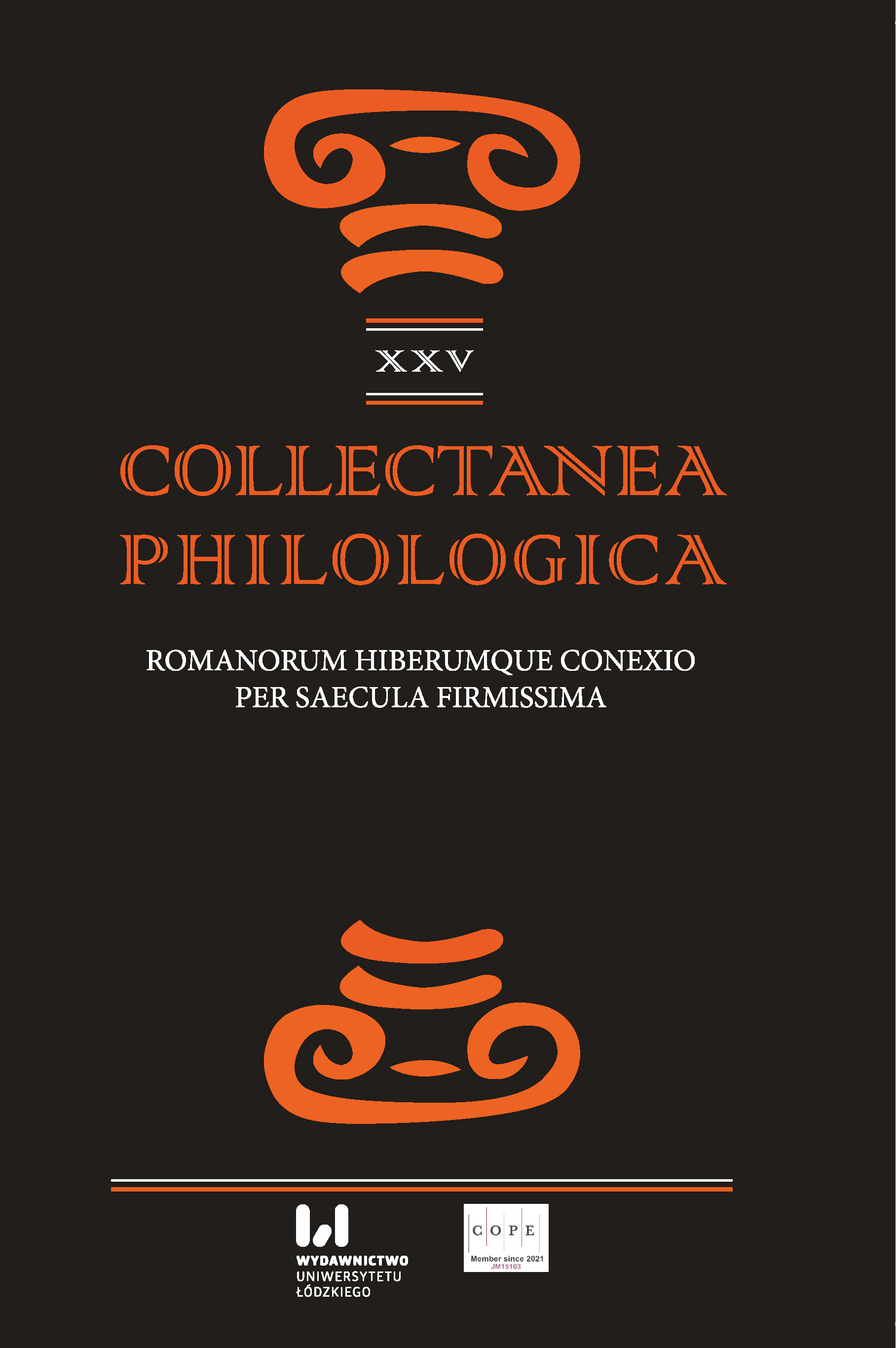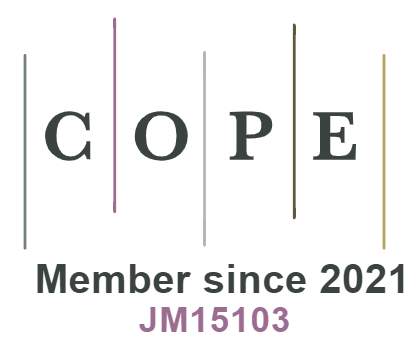The Roman Conquest of Hispania Citerior. Strategies and Archaeological Evidence in the North-Eastern Peninsular Area. (II-I BCE): the Examples of Puig Castellar of Biosca and Can Tacó (Catalonia, Spain)
DOI:
https://doi.org/10.18778/1733-0319.25.11Słowa kluczowe:
armia republiki rzymskiej, podbój, Hiszpania Bliższa, II wiek p.n.e.Abstrakt
The aim of this paper is to provide data for the knowledge of the strategies followed by Rome to take effective control of the Citerior Province of Hispania during the 2nd century BC. We will analyse two settlements of the north-eastern region, namely Puig Castellar de Biosca (Province of Lleida) and Can Tacó (Province of Barcelona), that will serve to gauge the degree of Roman territorial implementation and under what forms this power will be consolidated.
The period that interests us ranges from the end of the second Punic-Roman conflict to the first decades of the 1st century BC. It was a slow process in which Rome did not have a pre-established plan of action but was adapting its strategy to the different circumstances and stages of the conquest. The end of all this was the final control and pacification of the country.
While all the researchers have a common understanding that during the first phase of control of the Hispanic territories the army played the most important role, the main discrepancies are related to the nature and characteristics of this occupation. The main focus in this discussion has its centre in the need to define how the Roman Army embodied his presence in Hispania during the first century of conquest and to characterise the different settlements in order to identify and determine with precision their military character or their connection with the process of conquest without a strictly military function.
Funding: This research was funded by the Spanish Ministry of Science, Innovation and Universities (De la consolidación del poder militar romana a la fundación de ciudades (mediados del siglo II a.C.-principios del siglo I d.C). en la Cuenca del rio Segre: Iesso y Iulia Libica DGYCIT PID2019-104120GB-I00-2023-2021), and the Department of Culture of the Catalan Autonomous Government (La conquesta romana a la Catalunya interior: l’exemple de Puig Castellar (Biosca), CLT009/18/00014).
Bibliografia
Asensio, D., Cardona, R., Morer, J., Pou, J., Gil, B., Cantero, F.J., Sànchez, L. (2014). Novetats de la recerca en els nuclis lacetans de Castellvell (Olius) i Sant Miquel de Sorba (Montmajor). Les campanyes del 2011 al 2013. In: II Jornades d’Arqueologia de la Catalunya Central 2012. Actes (Vic, 13-15 desembre 2012). Barcelona: Generalitat de Catalunya. Departament de Cultura; Museu Episcopal de Vic. 104–110.
Google Scholar
Belmonte, C. (2015). El Serrat dels Espinyers: noves aportacions al poblament iber i romà d’Isona. (Pallars Jussà). In: Actes de les Primeres Jornades d’Arqueologia i Paleontologia del Pirineu i Aran (Coll de Nargó i la Seu d’Urgell, 29-30 de novembre 2013). Lleida: Generalitat de Catalunya. Departament de Cultura, Diputació de Lleida, Institut d’Estudis Ilerdencs. 156–163.
Google Scholar
Carreras, C., Martin, A., Pera, J., Rodrigo, E. (2016). “Las ánforas de Brindisi en la Hispania Citerior. Pautas de distribución y consumo”. Saguntum 48.4. 87–104. https://doi.org/10.7203/SAGVNTVM.48.767
Google Scholar
DOI: https://doi.org/10.7203/SAGVNTVM.48.7671
Casas, J., Nolla, J.M., Palahí, Ll., Vivó, D., Soler, V. (2015). “Mas Gusó: una statio romana al suburbium d’Emporiae (Provincia Hispania Citerior)”. Revista d’Arqueologia de Ponent 25. 245–262.
Google Scholar
Castanyer, P., Santos, M., Tremoleda, J. (2015). Una nueva fortificación de época republicana en Empúries. Una base militar para la conquista de Hispania. In: M. Bendala (coord.). Los Escipiones. Roma conquista Hispania. Exposición celebrada en el Museo Arqueológico Regional (Alcalá de Henares, febrero-septiembre 2016). Alcalá de Henares: Museo Arqueológico Regional. 107–127.
Google Scholar
Díaz, M., Ramírez, R. (2015). “El asentamiento militar de Puigpelat (Alt Camp, ager tarraconensis), un castellum tardorrepublicano en tierras tarraconenses”. Revista d’Arqueologia de Ponent 25. 263–278.
Google Scholar
Duran, M., Mestres, I., Principal, J., Padrós, C. (2015). “El Camp de les Lloses (Tona, Osona): un post avançat amb tallers metal:lúrgics al servei de la logística de l’exèrcit romano-republicà (125–75 ane)”. Revista d’Arqueologia de Ponent 25. 293–307.
Google Scholar
Molist, N. (coord.) (2008). La intervenció al sector 01 del Conjunt Històric d’Olèrdola. De la prehistòria a l’etapa romana (campanyes 1995–2006). Barcelona: Generalitat de Catalunya; Departament de Cultura.
Google Scholar
Noguera, J., Principal, J., Ñaco, T. (2014). La actividad militar y la problemàtica de su reflejo arqueológico: el caso del Noreste de la Citerior (218–45 a.C.). In: F. Cadiou and M. Navarro (ed.). La guerre et ses traces. Conflicts et sociétés en Hispanie à l’époque de la conquête romaine (IIIe–Ier s. av.C) Colloque International. Institut Ausonius, Bordeaux, France. Novembre 25–27. 2010. Ausonius Memoires 37. 31–56. Bordeaux: Ausonius Maison de l’Archéologie.
Google Scholar
Padrós, C., Pujol, A., Sala, R. (2015). “Puig Ciutat (Oristà, Barcelona): un praesidium pompeià als peus dels Pirineus?”. Revista d’Arqueologia de Ponent 25. 279–292.
Google Scholar
Pera, J., Carreras, C., Romaní, N., Rodrigo, E., Padrós, N., de Solà, G. (2016). El proceso de implantación romana en el NE de la Provincia Citerior en el siglo II a.C. In: J. Pera, J. Vidal (eds.). Fortificaciones y control del territorio en la Hispania Republicana. Zaragoza: Pórtico. 167–205.
Google Scholar
Pera, J., Carreras, C., Rodrigo, E., Romaní, N., Padrós, N., De Solà, G., Guitart, J. (2018). “Puig Castellar de Biosca (Segarra). Una fortificació del segle II aC a l’interior de Catalunya (campanyes 2013–2015)”. Tribuna d’Arqueologia 2015–2016. 31–56.
Google Scholar
Pera, J., Rodrigo, E., Romaní, N., Carreras, C. (2019) “Puig Castellar de Biosca (Lleida). Una fortificación romana del siglo II a. C. En el noreste de la Hispania Citerior”. Gladius 3. 19–43. https://doi.org/10.3989/gladius.2019.02
Google Scholar
Pera, J., Romaní, N., Rodrigo, E., Carreras, C., Catarineu. (in press). El contexto cerámico del castellum republicano de Puig Castellar de Biosca (180–120 a.C.). In: Actas del V Congreso Internacional de la Sociedad de Estudios de la cerámica antigua en Hispania (Alcalá de Henares, 6–8 novembre 2019). 37–50.
Google Scholar
Principal, J., Camañes, M.P., Padrós, C. (2015): “Un edifici singular al castellum de Monteró 1 (Camarasa, La Noguera), i l’urbanisme complex d’un post avançat del nord-est de la Citerior”, Revista d’Arqueologia de Ponent 25. 309–328. https://doi.org/10.3989/gladius.2019.02
Google Scholar
DOI: https://doi.org/10.3989/gladius.2019.02
Rodrigo, E., Carreras, C., Porcheddu, V. (2015). “Marques africanes i ròdies de Can Tacó”. Pyrenae, revista de prehistòria i antoiguitat a la Mediterrània occidental 46(2). 31–47.
Google Scholar
Rodrigo, E., Guitart, J., Garcia, G., Mercado, M. (2013a). El jaciment de Can Tacó (Montmeló/Montornès del Vallès) i els inicis de l’ocupacio del territori laietà en àpoca republicana. In: Actes del Simposio Internacional Ager tarraconensis, vol. 5. Tarragona: Institut Català d’Arqueologia Classica. 219–232.
Google Scholar
Rodrigo, E., Gutiérrez, A., Álvarez, A., Guitart, J. (2013b). El yacimiento de Can Tacó (Vallès Oriental, Cataluña) y el inicio de la arquitectura de tipo itálico en la Península Ibérica. Análisis de los materiales constructivos cerámicos (tegulae e ímbrex). In: I Congreso Internacional de estudios cerámicos. Noviembre 2010. Cadiz: Universidad de Cádiz. 1572–1587.
Google Scholar
Romaní, N., Rodrigo, E., Pera, J., Gutiérrez García-Moreno, A. (2020). El material constructiu de la fortificació militar de segle II aC de Puig Castellar de Biosca (Lleida): paviments, revestiments parietals i cobertes. In: Estudis sobre ceràmica i arqueologia de l’arquitectura en homenatge al Dr. Alberto López. Barcelona: Universitat Autònoma de Barcelona. 391–404.
Google Scholar
Ruiz de Arbulo, J. (2014). Kesse / Tarrákon / Tarraco. En torno a los orígenes de una ciudad portuaria. In: L. Mercuri, R. González Villaescusa, F. Bertoncello (eds.). Implantations humaines en milieu littoral méditerranéen: facteurs d’installation et processus d’appropriation de l’espace de la Préhistoire au Moyen Âge. XXXIVes rencontres internationales d’archéologie et d’histoire d’Antibes. Antibes: Éditions APDCA.
Google Scholar
Salazar, N., Pàmies, D., Moreno, I. (2016). “De Sigarra a Prats de Segarra: noves descobertes arqueològiques al Municipium Sigarrense (Els Prats de Rei, Anoia) entre l’Ibèric Antic i l’Edat Mitjana”. Tribuna d’Arqueologia 2013–2014. 115–134.
Google Scholar
Pobrania
Opublikowane
Jak cytować
Numer
Dział
Licencja

Utwór dostępny jest na licencji Creative Commons Uznanie autorstwa – Użycie niekomercyjne – Bez utworów zależnych 4.0 Międzynarodowe.
Funding data
-
Generalitat de Catalunya
Grant numbers CLT009/18/00014 -
Ministerio de Ciencia, Innovación y Universidades
Grant numbers DGYCIT PID2019-104120GB-I00-2023-2021












